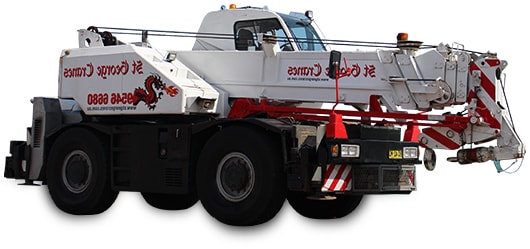Modern hydraulic cranes are designed to lift heavy materials to aid with moving objects, heaving wrecks aside, or even wrecking structures. In any case, hydraulic cranes like pick and carry cranes are of excellent help during natural calamities such as hurricanes, floods, and earthquakes.

A hydraulic crane includes an exceptionally flexible structure and a simple layout. It uses the fluid capability to work. Exactly like gas is the power means in pneumatics, liquid acts as the powering means in hydraulics. Hydraulic fluid is transported throughout the crane into various hydraulic motors and hydraulic cylinders.
For a hydraulic crane, oil is usually handled as hydraulic fluid. Tubes and hoses are utilized to transport the oil. The route that the hydraulic fluid takes is referred to as the hydraulic circuit, which can be of different kinds.
Open center circuits in addition to close center circuits are more common. When it comes to pressure, it's generated depending on the requirements. Control valves are utilized to handle the flow of the fluid.
A crane is commanded by a system in which an operator operates. Commands issued using a crane operator are interpreted into the motion of a broad assortment of actuators that move the mechanical construction in turn.
Owing to a great deal of power that may be transferred through little tubes and flexible hoses, hydraulic cranes have gained tremendous popularity.
The parts
Even though a hydraulic system isn't complex, it requires a few moving components for proper functioning. Be it a boom, which does the actual lifting, or the counterweights which are linked to the rear of the crane, preventing it from tipping overall components are equally important.